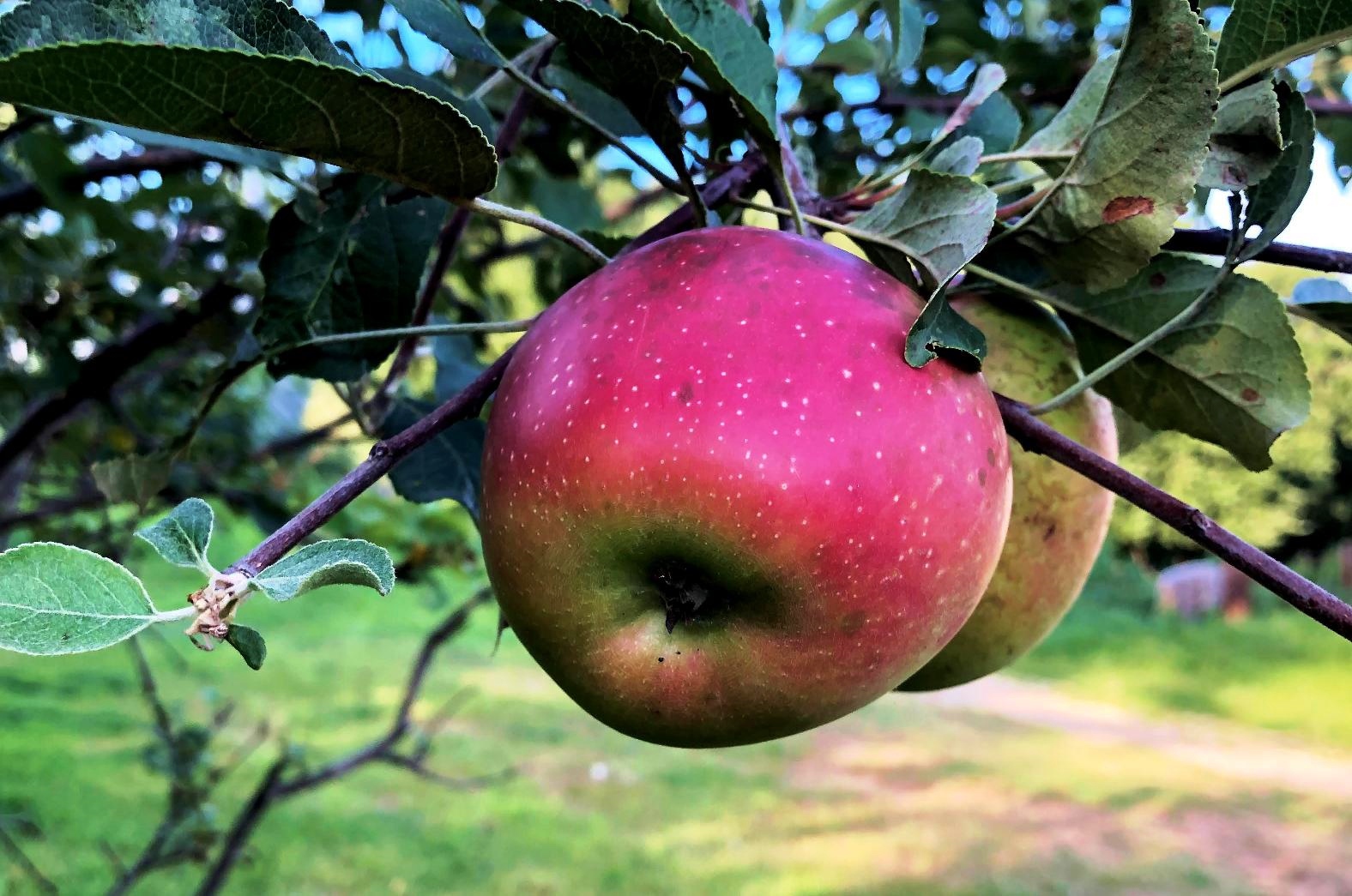Back Home by Chris Hardie
» Download this column as a Word document
» Download the photos that accompany this story
» Chris Hardie’s headshot
There’s a hilltop spot on the farm where the fields intersect — a spot that’s always been called “The Orchard.”
There were about a dozen apple trees in the orchard until the early 1980s, by my best memory. They may have been planted by my great-grandparents or could have been wild, but it was a spot to check for fall apples.

Today there are dozens of wild apple trees in the woods and we have several trees we planted in our yard. One of them started to fall over this spring, so I propped up the main branch with a pallet. It’s not pretty, but the tree is still upright.
Many of the wild trees are what some call spitters, which is what one does after tasting them because of their sour taste. Apples intended for eating are all grown from trees that have been grafted. Apple trees grown from seed will not resemble the apple from which the seed came because the genetics will change.
Henry David Thoreau in his 1862 essay, “Wild Apples,” said an apple grown from seed tastes “sour enough to set a squirrel’s teeth on edge and make a jay scream.”
But there are a few wild trees that produce very edible apples. They’re just not the blemish-free, perfectly round and deep-red varieties that I find are more like airbrushed fashion models.
There are more than 300 varieties of apples grown at Wisconsin orchards. Visiting orchards is a great family event; it can be an outdoor activity that’s something to do in the midst of a pandemic.
But for those who can’t visit that favorite orchard this year, unique Wisconsin apples can be shipped directly to a home. The Wisconsin Apple Growers Association and its orchards have created a Wisconsin sampler box of favorite and heirloom apples ripened to perfection. Many varieties are never found in grocery stores.
Visit wisconsinapplegrowers.org/Fresh-Apples to order a Wisconsin sampler box. The apple varieties in the box will be identified; visit wisconsinapplegrowers.org to learn more about them.
Wisconsin commercially produces more than 40 million pounds of apples each year; Minnesota grows more than 20 million. That sounds like a lot, but it pales to our neighbor to the north and east. Michigan is among the top five apple-producing states in the country with more than 800 million pounds grown annually.
My son, Ross, is an avid apple enthusiast. He has already harvested a tree that was half-uprooted by the wind storm of 1998 but continues to produce; it’s one of our early ripeners. The cattle and deer get their share, so we make good use of an apple picker with a basket to reach the higher branches. We’re missing our apple-picking buddy this year because Ross always enjoyed picking along with his grandfather, who loved apple pie.
The final harvest usually comes from a big tree that never ripens until late October. I remember one cold and blustery day when I parked the pickup truck under the tree, put a stepladder in the box and used the apple picker to extend my reach into the branches. It was cold, wet and windy but our efforts resulted in a half-dozen or so large pails and boxes of apples. We were just finishing as tiny flakes of snow started to fall.
It was a reminder that another season was just around the corner.
Chris Hardie spent more than 30 years as a reporter, editor



